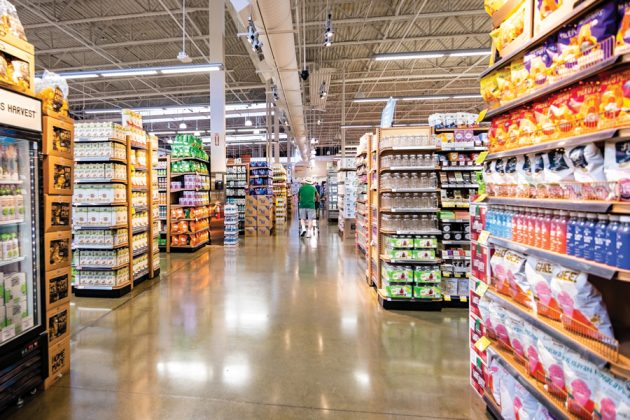
How the supply chain crisis brings opportunities
By Rosanna Lamanna
Business Operations Fuller Landau supply chain Photo © Sundry Photography / Adobe Stock
Photo © Sundry Photography / Adobe Stock The ongoing supply chain crisis continues to bring challenges for manufacturers and suppliers. Those same challenges can bring opportunities to rethink how food and beverage operations are managed.
When the world saw a dramatic change in terms of consumer expectations, buying preferences and behaviours, businesses had to adapt. Many embraced user-friendly online platforms that could satisfy end users’ need for speed in ordering and receiving of goods. With those advancements, it only takes three clicks or less to complete transactions, and deliveries are expected – and often executed – within hours.
In the past two years however, the processes we have come to rely on and taken for granted have been upended. Global supply constraints, transportation bottlenecks, geopolitical unrest, and labour shortages have exposed potential risk exposures that have not been actively managed or monitored, simply because there was no need for them.
Food and beverage producers across the board faced disruptions on multiple fronts, from employee absenteeism and mandated plant shutdowns to key ingredient shortages (e.g. stevia, coffee, vegetable oil, yeast, and wheat, among others) and equipment. Even demand for packaging materials far outpaced supply at times, leading to disruptions in production and empty store shelves.
We have all heard the adage, if it’s not broken, don’t fix it. It has become abundantly clear however that supply chain parts are breaking, driving the need for owners to recalibrate how their businesses manage their supply chain activities.
Reviewing the landscape
A good place to start is assessing the various elements of your supply chain to gain a realistic picture of costs, profitability, and potential solutions.
In these volatile times, accurate and efficient inventory management is critical. That is why it is essential to take stock of the vulnerabilities within your supply chain, including inventory management, shipping, and sourcing.
Factors to consider include:
- Moving away from single source suppliers – Single source suppliers and just-in-time inventory practices may have proved successful in the past, but longer lead times to receive either the commodities you need to manufacture the goods or obtain goods for resale have led to increased instability and risk. However, for the food industry, moving from single source suppliers can be onerous given the complexities of food safety and quality qualification requirements.
- Product shortages, lead times, freight costs of getting inventory into customers’ hands – As the industry faces rising costs and a shifting geopolitical landscape, explore available local suppliers that may be able to fill in some gaps. Assess whether there are alternate packaging material options available for your products or if there are substitutes you can use within the manufacturing process. It may not be a quick and easy implementation process, especially in the short-term, but it may be worth exploring.
- Freeing up cash flow – Cash flows in only when the company collects payment from the customers. All too often, companies are tying up cash in securing and obtaining the inventory they need. Tightening customer credit policies offers the potential for quicker customer payments, resulting in a quicker collection of cash and less interest costs incurred if you are borrowing to finance the transactions. Keep in mind, your credit policies should be considered fair to your customers.
- Rationalize inventory SKUs – Pinpoint the higher margin products that can allow you to maximize profitability, while eliminating SKUs that are low margin or require longer lead times to produce.
Automate and integrate
Inventory management apps and software should be at the top of your agenda. If you haven’t done so already, consider implementing cloud-based inventory management solutions. If you choose to work with a third-party software partner, make sure they have the proper service level agreements and security measures in place to protect your data.
Invest in accurate planning and forecasting systems to help optimize supply chain spend. These systems should be integrated with your inventory management and accounting systems to increase efficiency and improve accuracy.
Integrated inventory management systems are also essential to enabling product traceability, a vital need in the food industry. This is not simply a regulatory issue, but also offers a window to quickly mitigate the risk if a vital ingredient is delayed in transit for example.
Put sustainability front and centre
Sustainability is becoming increasingly important with business owners as well as their consumers. This is especially critical in the food industry, where customers are not only focused on value and pricing, but also on how companies treat the planet, suppliers, and employees.
If you have not built sustainability into your supply chain plans yet, make sure you address it when revisiting your current systems and processes. This can become a matter of business survival as environmental, social, and corporate governance (ESG) reporting is not only a concern for public companies. If you are a business partner or service provider within the supply distribution chain, your company may be asked to report measures you company is taking to support ESG initiatives.
Of course, there is a price tag associated with some of these strategies, and you will need to evaluate the benefits versus the costs. The key questions you need to ask are: Have you budgeted for them? And do you have sufficient capital or need to seek financing externally?
Resources for funding opportunities
- Government of Canada
- Ontario Government
- Ontario Minister of Agriculture, Food and Rural Affairs
- Food Processing Skills Canada
- Ontario Food Cluster
Rosanna Lamanna, CPA, CA, LPA is a partner in Fuller Landau’s audit and accounting practice and a co-leader of the Food and Beverage group. She can be reached at 416-645-6502 or rlamanna@fullerllp.com.
Print this page